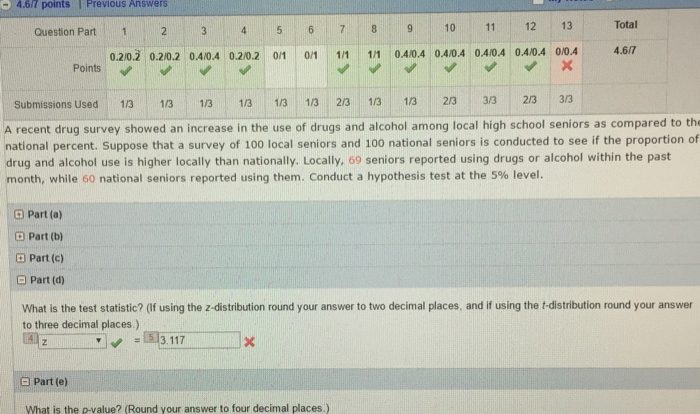Good tutorial questions for avid learners are essential for engaging and enhancing the learning process. Well-crafted questions spark curiosity, foster critical thinking, and promote active participation.
This comprehensive guide delves into the types of effective tutorial questions, techniques for designing high-quality questions, and strategies for incorporating them into various learning environments.
Introduction to Effective Tutorial Questions
In the realm of learning, well-crafted tutorial questions serve as indispensable tools that not only assess understanding but also actively engage learners and foster deeper comprehension. These questions transcend the mere act of knowledge retrieval; they challenge learners to critically analyze, synthesize, and apply information, propelling them toward a more profound and lasting understanding of the subject matter.
The benefits of well-structured questions are manifold. They stimulate curiosity, spark critical thinking, and encourage learners to explore concepts beyond the surface level. By prompting learners to articulate their thoughts and insights, questions provide a platform for self-reflection and metacognition, empowering them to monitor their own understanding and identify areas for further exploration.
Essential Characteristics of Effective Tutorial Questions, Good tutorial questions for avid
- Clarity and Specificity:Questions should be precise, unambiguous, and focused on a specific aspect of the topic, avoiding vague or overly broad language.
- Cognitive Level:Questions should challenge learners at an appropriate cognitive level, ranging from lower-order questions that test basic recall to higher-order questions that require analysis, evaluation, and synthesis.
- Open-Endedness:Open-ended questions encourage learners to explore multiple perspectives and provide detailed responses, fostering deeper engagement and understanding.
- Relevance and Meaningfulness:Questions should connect to the learning objectives and be relevant to the topic at hand, ensuring that learners see the purpose and significance of their responses.
- Variety:A mix of question types, such as multiple choice, short answer, essay, and problem-solving questions, keeps learners engaged and challenges them to demonstrate their understanding in diverse ways.
Types of Effective Tutorial Questions
Tutorial questions can be classified into different types, each serving a specific purpose. Understanding these types is crucial for creating effective tutorial sessions.
Open-Ended Questions
Open-ended questions allow students to demonstrate their understanding and critical thinking skills by providing their own answers. These questions typically begin with words like “explain,” “describe,” or “analyze.” They encourage students to elaborate on their responses and explore different perspectives.
Example:Explain the concept of recursion and provide an example of its implementation.
Closed-Ended Questions
Closed-ended questions have a limited number of specific answers. They are useful for assessing students’ knowledge and comprehension of specific facts or concepts. These questions typically use words like “who,” “what,” “when,” or “where.”
Example:What is the capital of France?
Leading Questions
Leading questions are designed to guide students toward a specific answer. They are often used to reinforce a particular concept or to encourage students to consider a particular perspective. These questions typically begin with phrases like “Don’t you think…” or “Isn’t it true that…”
Example:Don’t you think that the Internet has revolutionized communication?
Hypothetical Questions
Hypothetical questions present students with imaginary scenarios and ask them to consider the possible outcomes or consequences. These questions help students develop their problem-solving skills and think creatively. They typically begin with phrases like “What if…” or “Suppose that…”
Example:Suppose that you are the CEO of a company. How would you handle a major crisis?
Designing High-Quality Tutorial Questions: Good Tutorial Questions For Avid
Crafting effective tutorial questions is crucial for engaging learners and fostering deep understanding. To achieve this, questions should be clear, concise, and tailored to the specific learning objectives.
Here are some guidelines for creating high-quality tutorial questions:
Clarity and Conciseness
- Use precise and unambiguous language.
- Avoid jargon or technical terms that may not be familiar to learners.
- Keep questions brief and to the point.
Relevance and Specificity
- Ensure questions directly relate to the learning objectives.
- Focus on specific aspects or concepts within the tutorial.
- Avoid broad or open-ended questions that may lead to irrelevant answers.
Thought-Provoking
- Ask questions that require learners to apply critical thinking and analysis.
- Encourage learners to consider multiple perspectives and draw connections.
- Pose questions that stimulate curiosity and foster further exploration.
Utilizing Tutorial Questions Effectively
Incorporating tutorial questions into learning environments enhances the learning process. By strategically posing questions, educators can promote active learning, foster discussions, and assess student understanding.
Promoting Active Learning
Tutorial questions encourage students to engage with the material, think critically, and apply their knowledge. By answering questions, students actively process information, making it more meaningful and memorable.
Fostering Discussion
Questions can spark discussions and debates among students. They provide a platform for sharing ideas, challenging perspectives, and deepening understanding. By encouraging students to ask and answer questions, educators foster a collaborative learning environment.
Assessing Understanding
Tutorial questions can be used to assess student understanding of the material. By observing how students respond to questions, educators can identify areas where further support or clarification is needed. This information can be used to tailor instruction and provide targeted feedback.
Examples of Good Tutorial Questions
Well-crafted tutorial questions serve as valuable tools for assessing understanding, fostering critical thinking, and guiding students through learning material effectively. Here are some specific examples of well-designed tutorial questions across various subject areas:
Mathematics
- Explain the concept of a derivative and provide an example of its application in real-world problem-solving.
- Describe the steps involved in solving a quadratic equation using the quadratic formula. Provide a numerical example to illustrate your explanation.
Science
- Explain the role of photosynthesis in the carbon cycle and its significance for life on Earth.
- Describe the structure and function of a typical animal cell, identifying its major organelles and their specific roles.
History
- Analyze the causes and consequences of the American Civil War, considering both the political and social factors that shaped the conflict.
- Describe the key events and figures involved in the Renaissance, discussing its impact on art, literature, and science.
Literature
- Discuss the use of symbolism and allegory in a specific literary work, explaining how these techniques enhance the story’s meaning.
- Analyze the character development of a protagonist in a novel, tracing their journey and motivations throughout the narrative.
Creating Interactive Tutorial Questions
Interactive tutorial questions are a powerful tool for engaging learners and enhancing the learning experience. By incorporating online platforms or software, educators can create interactive questions that foster active participation and promote critical thinking.
Benefits of Interactive Questions
- Increased Engagement:Interactive questions capture learners’ attention and motivate them to participate in the learning process.
- Enhanced Comprehension:Active participation in answering questions improves learners’ understanding and retention of the material.
- Real-time Feedback:Online platforms provide instant feedback on learners’ responses, allowing them to identify areas for improvement.
- Personalized Learning:Interactive questions can be tailored to individual learners’ needs and learning styles.
- Collaboration:Online platforms facilitate group discussions and peer collaboration, fostering a sense of community among learners.
Considerations for Using Interactive Questions
- Technical Requirements:Ensure that learners have access to the necessary technology and internet connectivity.
- Question Design:Craft clear and engaging questions that promote higher-order thinking skills.
- Time Management:Allocate sufficient time for learners to complete the interactive questions.
- Feedback Provision:Provide timely and constructive feedback to guide learners’ learning.
- Assessment Integration:Align interactive questions with learning objectives and use them as part of the assessment process.
Conclusion
In conclusion, good tutorial questions are essential for engaging avid learners and promoting effective learning outcomes. By prioritizing the development of high-quality questions, educators and content creators can foster critical thinking, knowledge retention, and a deeper understanding of the subject matter.
Effective tutorial questions not only assess learners’ comprehension but also guide them through the learning process, provide opportunities for reflection, and encourage active engagement with the material. By utilizing a variety of question types, incorporating interactive elements, and aligning questions with learning objectives, educators can create a dynamic and engaging learning environment that empowers learners to succeed.
Questions Often Asked
What are the benefits of using good tutorial questions?
Good tutorial questions enhance engagement, foster discussion, promote critical thinking, and assess understanding.
What are the different types of tutorial questions?
Common types include open-ended, closed-ended, leading, and hypothetical questions.
How can I create high-quality tutorial questions?
Follow guidelines for clarity, conciseness, relevance, specificity, and thought-provoking nature.
How can I use tutorial questions effectively?
Incorporate questions into lessons, discussions, and assessments to promote active learning and assess understanding.

